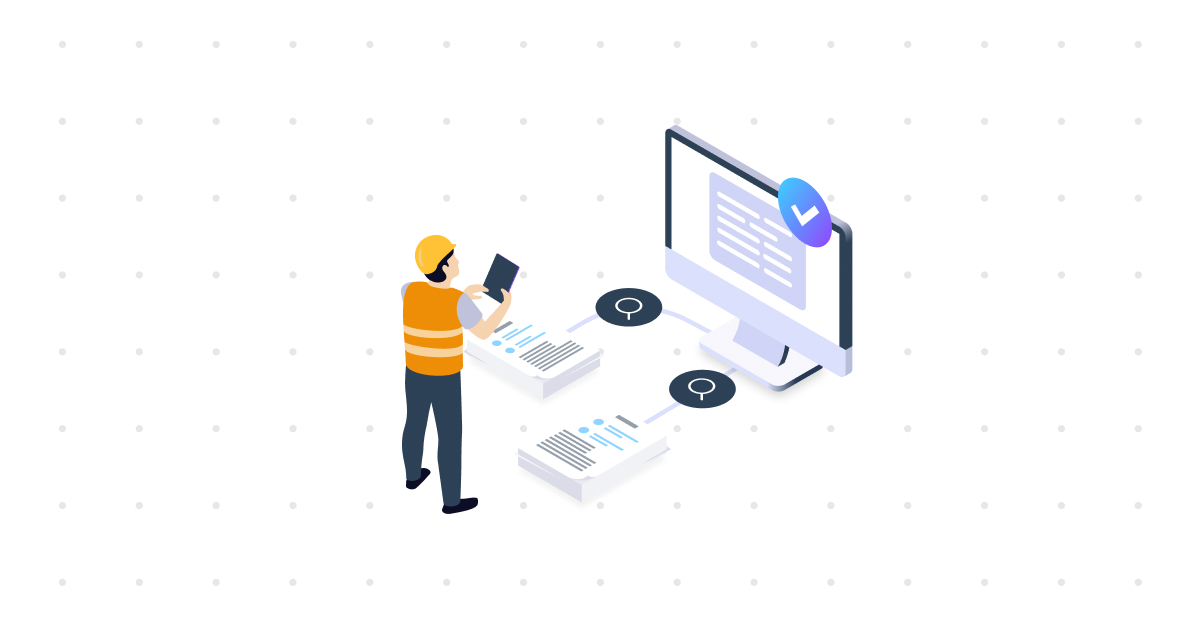How to Create Reusable and Software Neutral Smart Standards
- Insight
You shouldn’t be spending your time manually scanning PDF after PDF, hunting for standards, specifications and requirements to copy and paste into your software applications, like systems engineering or requirements management software.
This kind of approach can only lead to inconsistencies and redundancies. Not to mention the vast amount of time and resources wasted just to undergo this process.
The main reason why so many find themselves in the tedious routine of identifying and interpreting relevant information and then copy-pasting it into their software is that we still rely on document-based processes. The plain text within documents is not structured in a way that enables efficient processing by computers.
We can state that the text is not computer-interpretable, which means that computers can’t interpret the meaning of information without the interference of humans, much less differentiate, for instance, a requirement from filler text. This results in countless hours lost to laborious work.
Enter our solution for ‘Smart Standards,’ which makes standards fully decipherable to computers. These standards fix the key issues that have long plagued specification, standards, and requirements management in the built environment.
Benefits of Next-Level Smart Standards
For us, the “SMART” in Smart Standards refers to standard specifications or standard requirements that both humans and computers can interpret and reuse. As a result of this accessibility, the data needs of all stakeholders across, for instance different project stages can be satisfied.
But before we can capitalize on the value of data, it is essential to extract the valuable data locked within the documents. This process involves reading the text, identifying relevant information, and transforming it into a structured format. After extracting, it needs to be refined so it is pure and of high quality. Finally, you must process it in different software so it can be used to support digital capabilities, inform business decisions, and drive improvements.
This can be done either manually or with the help of AI and NLP, but both yield great advantages:
- not having to (manually) copy and paste information into your software repeatedly,
- make it easier to comply with industry and government regulations,
- reduce instances of miscommunication and even prevent costly mistakes.
The ISO has categorized these ‘Smart Standards’ as level 4 standards: standards that computers can fully interpret. Additionally, there is a way to improve the efficiency of smart standards. However, to push your smart standards to the next level, you’re going to need the Laces Standards Manager.
How Laces Fits into Smart Standards
With the Laces Standards Manager, you only have to structure the standards once, and you can then reuse them multiple times in multiple software applications and over multiple project stages, for instance. Additionally, Through the use of AI and NLP (Natural Language Processing), Laces can take hundreds of pages of PDFs, find relevant specifications and requirements, and help you transform them into structured data.
Let’s go over how by explaining the process of how Laces helps you:
- Capture: Import PDFs, extract relevant specifications, and structure them. You’ll then be able to centrally manage any structured data you create. For all structured data, you’ll be able to trace to the source and enrich it with extra information.
- Share: With a simple click, publish your smart semantic standards in the cloud via the Laces Data Platform. This enables seamless consumption by various software without altering its data structure or format. This structured data can be effortlessly shared as Linked Data, an open standard to facilitate interoperability across different applications.
- Apply: You can then connect your data with data from various sources and make them available in any application. Your data becomes software-neutral, which avoids transformations and can serve as a single source of truth for different stakeholders.
Laces reduces manual labor, saves time, and produces higher-quality results. It enables businesses to focus on core value creation and to become more ready to tackle global challenges with ease. After all, the more explicit and formal information is, the higher the digital ambition can be.
How You Can Start
The hardest part of a project should be navigating bureaucratic hurdles and managing the intricate logistics that go into building it, whether that be a bridge, hospital, or ship. Not the tedious routine of hunting through hundreds of documents, searching for the correct specifications, only to then manually copy and paste those specifications into your requirements management or systems engineering software.
By taking “dumb” specifications and turning them into intelligent ones, by centrally managing your libraries, and by making your smart standards available in an Open Standard – so that you can easily share your data with anyone you want – the Laces Standards Manager unshackles you from common data management woes.
Spend a couple of seconds today and fill out our form to get in contact with one of our experts. That’s all it takes to begin harnessing the power of Smart Standards through the Laces Standards Manager.
Structure, Link, and Reclaim Control Over Requirements
In today’s complex engineering landscape, clarity is non-negotiable whether you’re working on a new satellite platform, an electric vehicle, or a regional water system. The systems we build are more complex, integrated, and dependent on data than ever before. And yet, one of the most critical ingredients for success, the specification, is still too often […]
ReadWhy You Should Use Laces to Simplify Verification and Compliance
Verification plays a critical role in industries where precision, safety, and accountability are non-negotiable, whether you’re designing infrastructure, building vehicles, or manufacturing medical devices. Yet, for many teams, managing the verification process is still a complex, manual, and error-prone task. This is where the Laces Requirements Manager comes in. It simplifies the planning and execution […]
ReadExtracting Specifications from Documents: Manual vs. NLP-Based Extraction
Extracting, interpreting, and applying specifications from technical documents, like standards, contracts, or regulations, is often a necessary but painstaking part of project or product management. Traditionally, this has been done manually, but recent advances in Natural Language Processing (NLP) have opened up new, intelligent alternatives. In this blog, we’ll explore the differences between manual and […]
Read


